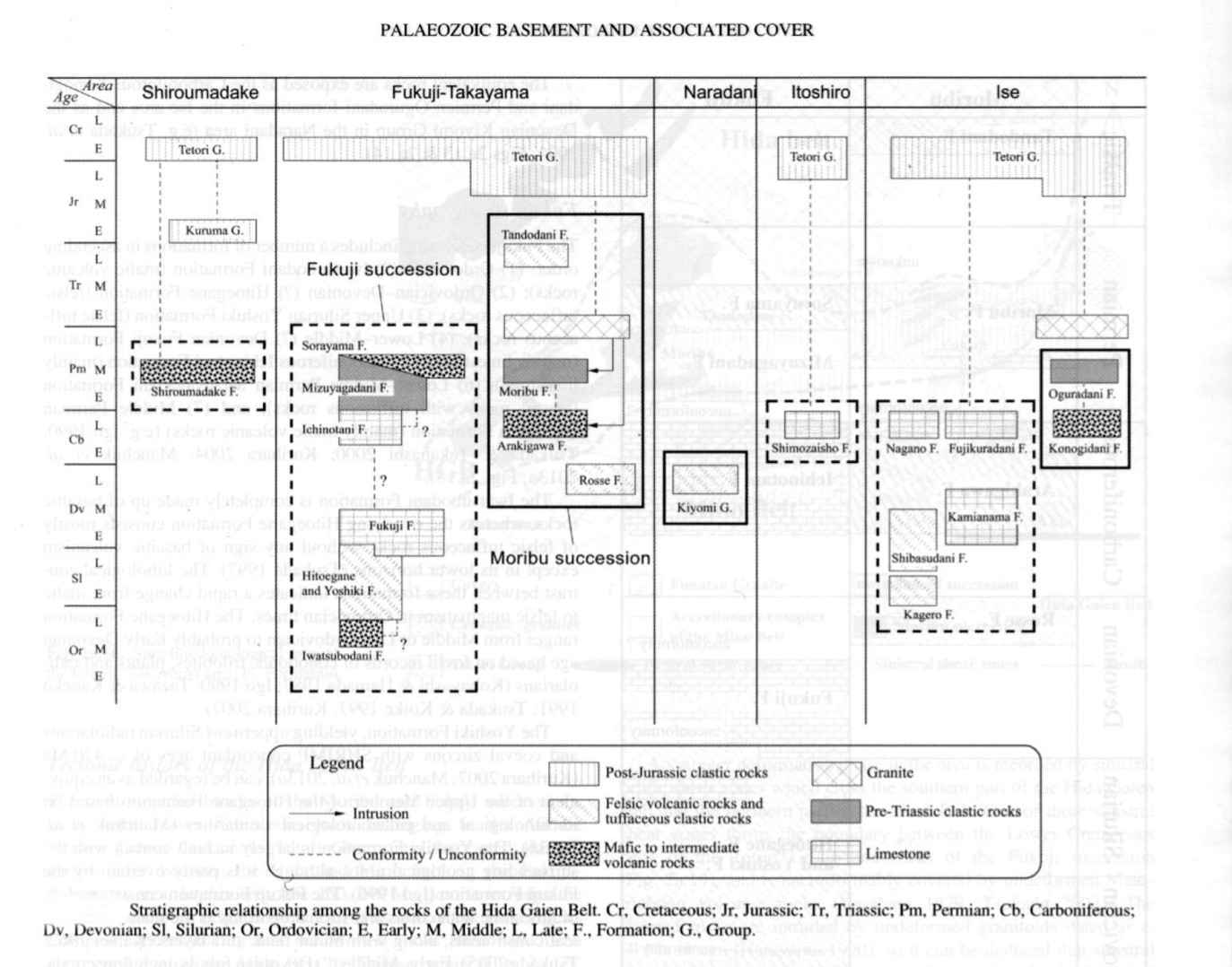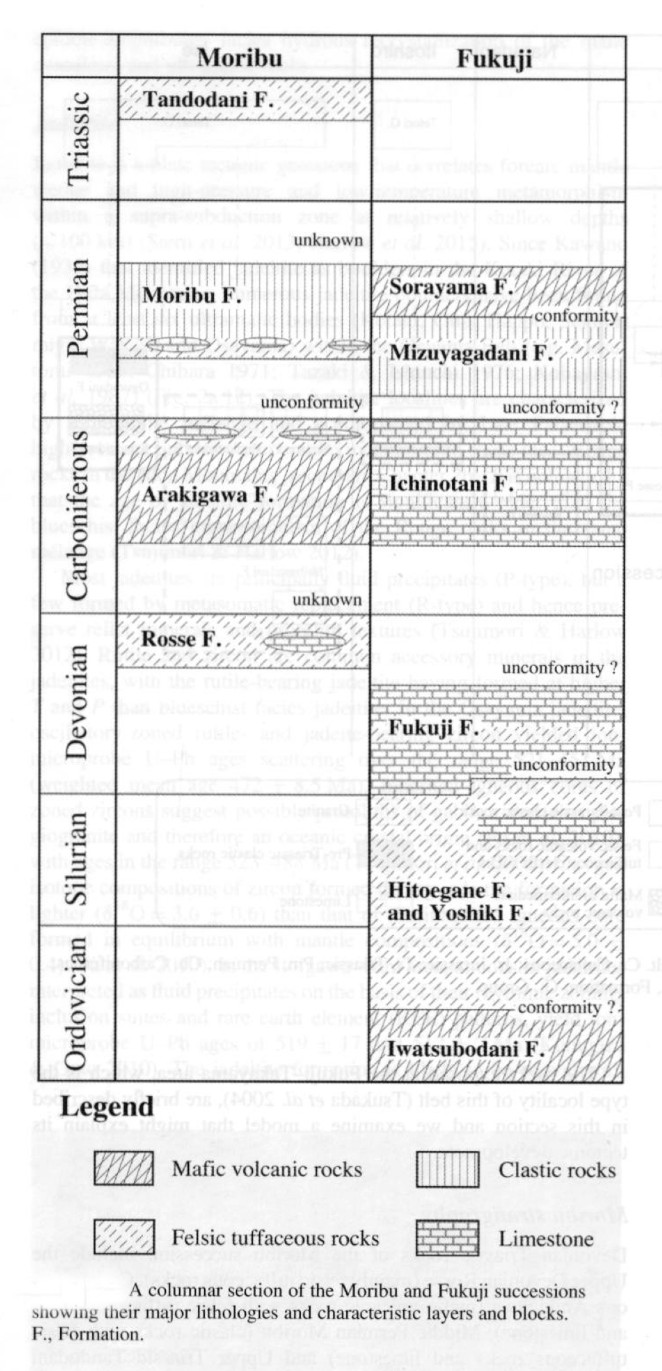Ichinotani Fm
Type Locality and Naming
Fukuji—Takayama area (b) is the type locality of this belt (Tsukada et al., 2004).
Synonym:
Lithology and Thickness
Mainly limestone
[Figure 1: Stratigraphic relationship among the rocks of the Hida Gaien Belt (after M. Ehiro et al., 2016)]
[Figure 2: A columnar section of the Muribu and Fukuji successions showing their major lithologies and characteristic layers and blocks (after M. Ehiro et al., 2016)]
Relationships and Distribution
Lower contact
Conformably overlies Fukuji Fm (Tsukada et al., 1999)
Upper contact
Regionally, the schematic strat column indicates the next younger unit as Mizuyagadani Fm
Regional extent
Hida Gaien Belt- Fukuji-Takayama area (b)
GeoJSON
Fossils
Has yielded many Visean—Gzhelian fossils such as fusulinoideans and smaller foraminifers
Age
Depositional setting
The fossil evidence indicates an origin in a tropical to subtropical environment (lgo 1956; Kate 1959; Igo & Adachi 1981; Adachi 1985). Remarkable red shale layers in this formation suggest that a pale soil formed by chemical weathering of limestone was deposited in a fresh water lake (Igo I960).
Additional Information

